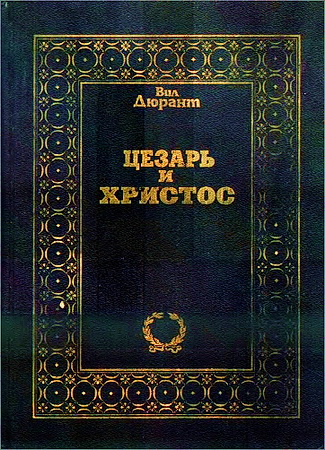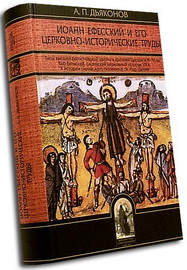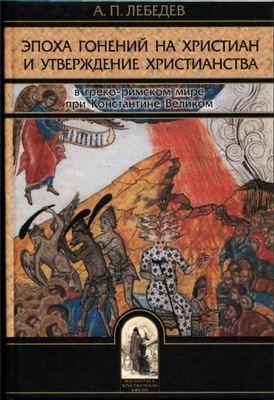
Meier - Marginal Jew - Мейер - Маргинальный еврей
The Anchor Bible Reference Library
published by doubleday
Marginal Jew - Rethinking the historical Jesus - John Meier - 4 тома
1991, 1994, 2001, 2009
Marginal Jew - Rethinking the historical Jesus - John Meier - Introduction
1. THE NATURE AND ORIGIN OF THIS BOOK
This book grapples with one of the greatest puzzles of modern religious scholarship, the historical Jesus. As I will explain at length in Chapter 1, by the "historical Jesus" I mean the Jesus whom we can recover, recapture, or reconstruct by using the scientific tools of modern historical research. Granted the fragmentary state of our sources and the often indirect nature of the arguments we must use, this "historical Jesus" will always remain a scientific construct, a theoretical abstraction that does not and cannot coincide with the full reality of Jesus of Nazareth as he actually lived and worked in Palestine during the 1st century of our era. Properly understood, such an approach seeks neither to prove any faith stance nor to attack it. My method follows a simple rule: it prescinds from what Christian faith or later Church teaching says about Jesus, without either affirming or denying such claims.
To explain to my academic colleagues what I propose to do in this book, I often use the fantasy of the "unpapal conclave." Suppose that a Catholic, a Protestant, a Jew, and an agnostic—all honest historians cognizant of lst-century religious movements—were locked up in the bowels of the Harvard Divinity School library, put on a spartan diet, and not allowed to emerge until they had hammered out a consensus document on who Jesus of Nazareth was and what he intended in his own time and place. An essential requirement of this document would be that it be based on purely historical sources and arguments. The resulting unreligious "formula of concord" would suffer from all the ills endemic to ecumenical statements drawn up by committees. At times ambiguous language would be carefully chosen to paper over differences, at times points of divergence on which no agreement could be reached would have to be openly admitted. Probably this white paper on Jesus would reflect fully the opinions of no one member of the famished conclave. Certainly it would not contain affirmations that the Catholic or Protestant member would firmly hold by faith. The basic requirement that the consensus document be open to verification by any and all persons using the means of modern historical research would produce a narrow focus, a fragmentary vision, perhaps even distortions.
Nevertheless, something would be gained. We would have a rough draft of what that will-o'-the-wisp, "all reasonable people," could say about the historical Jesus. The document could serve as common ground, a starting point for dialogue between Christians and Jews, between various Christian confessions, and between believers and nonbe-lievers, as well as an invitation to further research by both historians and theologians. Such a limited consensus statement, which does not claim to act as a substitute for the Christ of faith, is the modest goal of the present work.
This book on the Jesus of history has a long history of its own. In 1984 I was asked by Professor Raymond E. Brown of Union Theological Seminary in New York to write an article on the Jesus of history for the new edition of the Jerome Biblical Commentary, which was published in 1990.1 It was perhaps symptomatic of the state of American Catholic biblical studies in the sixties that no extended treatment of the historical Jesus was included in the original edition of the Jerome Biblical Commentary, published in 1968.2 Hence I had to start from scratch; the ensuing research proved to be much more intriguing and engaging than I had first expected.
During the time of my research and writing, I was requested by a number of organizations to supply popular lectures and articles that would distill the results of my more technical work. These attempts at popularization included an article in the "Outlook" section of the Washington Post in December 19843 and a much longer essay in the New York Times Book Review in December 1986.4 A still lengthier study was later published in my collected essays, The Mission of Christ and His Church.5
Around this time, early in 1987, a number of colleagues at Catholic University and in the Catholic Biblical Association urged me to write a book-length treatment of the historical Jesus for use with students in the classroom as well as for the educated lay reader. At first I was hesitant to attempt a project so often launched with such mixed results. But Professor Joseph A. Komonchak of Catholic University pointed out to me that there was at the present time a real lacuna in solid presentations of the historical Jesus aimed at both doctoral-level students and the more general audience of clergy, seminarians, and educated laity. The well-known Jesus of Nazareth by Gtinther Bornkamm,6 originally published in 1956, is now somewhat dated; and recent work on early Judaism leads one to detect in Bornkamm's portrait of Jesus of Nazareth some of the features of those two great Martins of Germany, Luther and Heidegger.7 The more recent and extensive Jesus and Judaism by E. P. Sanders (1985)8 avoids many of the pitfalls of Bornkamm's Jesus, yet some of Sanders' positions on Jesus have proved highly controversial. As in the 1st century, so today: no one's Jesus—and no one Jesus—suits everyone.
By a happy coincidence, it was around this time that Professor David Noel Freedman approached me with a request to write a Jesus book for the Anchor Bible Reference Library series. It was with much misgiving that I agreed. Despite all the encouragement I have received, the scattered rubble left by two centuries of questing for Jesus has often made me ask: Why even try where so many have failed? Why join the legion of scholars who have peered narcissistically into the pool of the historical Jesus only to see themselves? No other line of research seems so geared to making skeptics out of scholars. From Jesus the violent revolutionary to Jesus the gay magician, from Jesus the apocalyptic fanatic to Jesus the wisdom teacher or Cynic philosopher unconcerned about eschatology, every conceivable scenario, every extreme theory imaginable, has long since been proposed, with opposite positions canceling each other out and eager new writers repeating the mistakes of the past. In one sense, there are enough "Jesus books" to last three lifetimes, and a sinful Buddhist might well be condemned to spend his next three incarnations wading through them.
Джон Мейер с серией книг - Маргинальный еврей: Переосмысление исторического Иисуса
Третий поиск исторического Иисуса
Джон Мейер в своей серии книг "Маргинальный еврей: Переосмысление исторического Иисуса" с помощью методов современной науки стремится восстановить, вернуть, или реконструировать исторического Иисуса.
Автор полагает, что такое исследование может быть принято разнообразным спектром ученых - католиками, протестантами, евреями и агностиками - о том кем был Иисус из Назарета и чему учил.
"Предположим, католик, протестант, иудей и агностик — каждый из них добросовестный ученый, хорошо знакомый с религиозными движениями I века, — заперты в библиотеке богословского факультета в Гарварде, где их держат на спартанской диете и не позволяют покинуть место «заключения», пока они не сделают общее дело. Они должны создать общий документ, при полном согласии, отвечающий на вопрос: кем был Иисус из Назарета и каковы были его намерения."




Комментарии (1 комментарий)
Спасибо!